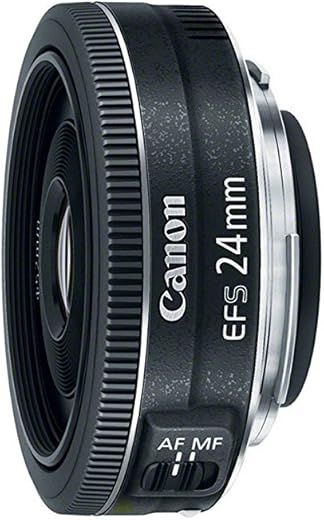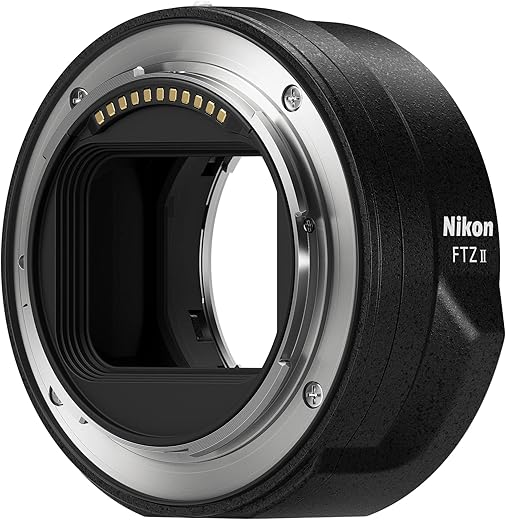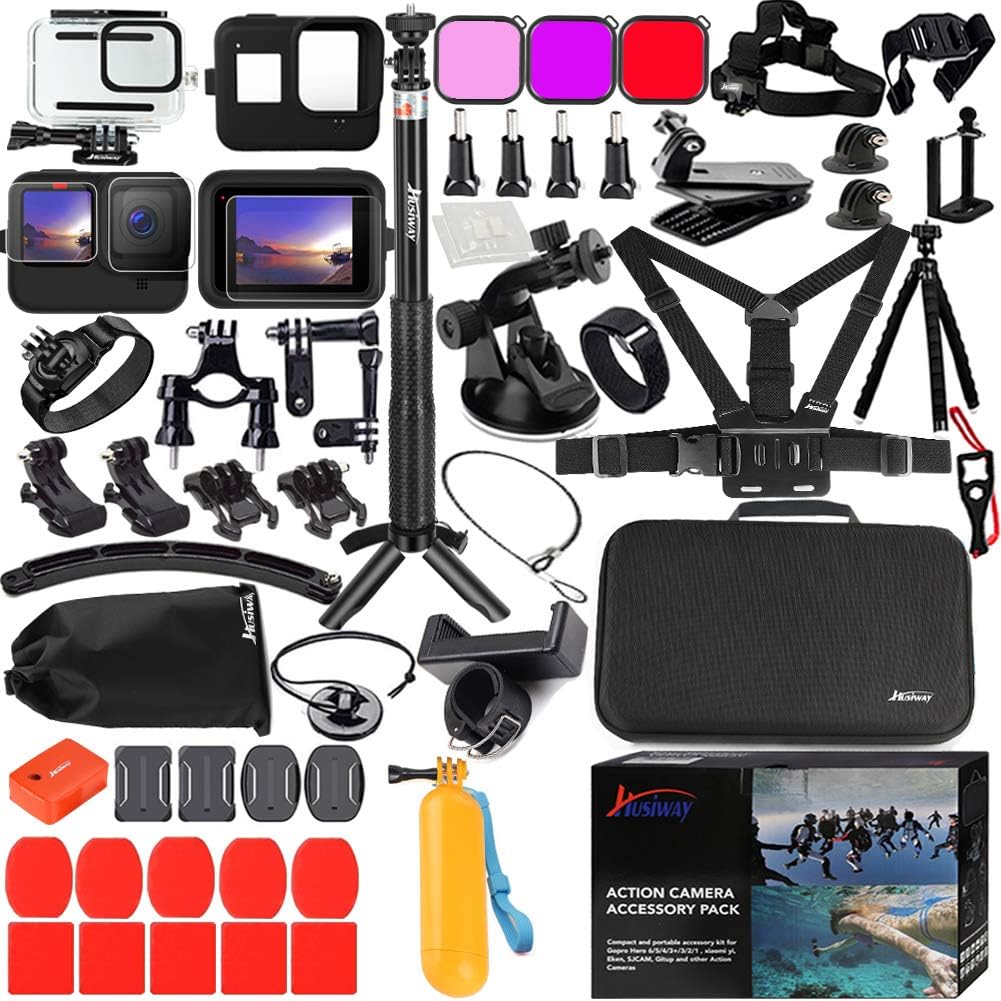As a photographer, I understand that the choice of lens can significantly impact the quality and versatility of my shots. In this post, I will share my top six must-have DSLR lenses that have consistently enhanced my photography experience. Whether I am capturing landscapes, portraits, or close-up details, the right lens makes all the difference. Let’s explore these essential tools that can elevate your photography skills and expand your creative possibilities.
Canon 24mm f/2.8 STM Lens
The Canon EF-S 24mm f/2.8 STM Lens is an incredibly lightweight and compact option that perfectly fits my Canon APS-C cameras. With a 35mm equivalent focal length of 38mm, it serves as a versatile tool for various photography styles—from landscapes to close-ups. The lens features advanced optics, including an aspherical element and specialized coatings that significantly reduce ghosting and flare, ensuring crystal-clear images and vibrant color fidelity.
This lens has quickly become a favorite in my collection due to its impressive performance at both f/2.8 and narrower apertures. I appreciate its ability to maintain sharpness across the entire frame and a pleasing out-of-focus background, thanks to its rounded 7-blade diaphragm. Whether I’m using it for casual street photography or capturing intricate details in floral shots, it delivers exceptional results every time. The silent STM autofocus system also makes it an excellent choice for video recording, enhancing its versatility in my creative endeavors.
Canon 50mm f/1.8 STM Lens
The Canon EF 50mm f/1.8 STM lens has quickly become my favorite tool for capturing stunning images. With its impressive f/1.8 aperture, I can shoot in low-light situations without the need for flash, resulting in sharp, atmospheric photos that really convey the mood of the moment. The lens’s 50mm focal length is perfect for portraits, allowing me to create beautiful background blur that makes my subjects truly stand out.
What I appreciate most is the build quality and lightweight design of this lens. The upgraded metal mount and smoother focus ring add to its durability while making manual focus adjustments easy. The near-silent STM technology enables quick and precise autofocus, which is a game-changer when I’m capturing spontaneous moments or shooting video. As an affordable entry into the world of prime lenses, the Canon EF 50mm f/1.8 STM truly delivers outstanding performance that enhances my photographic experience.
Canon EF 75-300mm Telephoto Zoom Lens
The Canon EF 75-300mm f/4-5.6 III Telephoto Zoom Lens is a versatile option for both aspiring and seasoned photographers looking to capture distant subjects with clarity. Its focal length range allows me to easily switch between dynamic sports shots and serene wildlife photography, making it an excellent budget-friendly addition to my camera kit. Weighing just 16.8 ounces, this lens is lightweight and manageable, fitting seamlessly into my photography ventures whether I’m in the field or at family events.
While I appreciate the lens’s extended reach, I’ve noticed some limitations, particularly in low-light conditions and with fast-moving subjects, where the autofocus can be sluggish. However, the impressive image quality at 75-200mm ensures I can attain sharp portraits and scenic shots. This lens has proven to be an invaluable tool for improving my skills and exploring the world of telephoto photography without breaking the bank.
Altura 58MM 0.43x Wide Angle Lens
The 58MM 0.43x Altura Photo Professional HD Wide Angle Lens is a versatile attachment that effortlessly screws onto the front of your compatible lens, instantly enhancing your photography with an expansive field of view. Suitable for several Canon models, this lens is especially notable for its detachable macro feature, allowing me to capture stunning close-ups of small subjects with impressive clarity. Although I have noticed some vignetting and a soft fisheye effect at extreme wide angles, I appreciate the affordable option it provides for elevating my landscape and architecture photography.
With durable construction and seamless compatibility with various lens models, this wide-angle attachment has transformed my photographic journey. I was delighted to find that it easily attaches to my Canon EOS 70D, enhancing my capabilities without breaking the bank. While I sometimes encounter slight distortion at the edges, the macro functionality adds immense value for capturing intricate details, making it a worthy addition to my photography gear.
85mm f1.8 EF Portrait Lens for Canon
The 85mm f1.8 Portrait Lens is an exceptional choice for capturing stunning portraits, making it ideal for both half- and full-body shots. With its large f1.8 aperture, this lens creates beautiful background bokeh, allowing the subject to stand out strikingly against a softly blurred backdrop. I appreciate how versatile this medium telephoto lens is, making it equally effective for street photography and low-light conditions.
As a fully manual lens, I’ve found that it encourages me to engage more thoughtfully with my photography. While the lack of electronic contacts means my camera won’t recognize the lens automatically, the manual focus feature allows for a more hands-on experience, which I find quite rewarding. Though it may require a learning curve, the image clarity and depth that this lens provides are well worth the effort, presenting an excellent option for those looking to refine their skills while staying within budget.
High-Power 420-1600mm f/8.3 Telephoto Lens
I have found the High-Power 420-1600mm f/8.3 HD Manual Telephoto Zoom Lens to be a remarkable tool for capturing stunning images at a distance. Designed for a wide range of Canon models, this lens enhances my ability to photograph wildlife and sports, offering impressive flexibility with its extended zoom capabilities. While I appreciate its manual focus feature, I’ve learned that patience is essential in mastering this lens to achieve the sharp and clear shots I desire.
Constructed with quality in mind, this telephoto lens provides exceptional clarity, although it does come with some limitations like the lack of autofocus and image stabilization. Despite these challenges, the lens has allowed me to explore astrophotography as it excels in capturing the moon and other stationary terrestrial subjects. For those looking to delve into long-distance photography on a budget, this lens offers quality performance for its price, making it an excellent entry point for hobbyists like me.
Compare Your Lens Options
Camera Lens Basics: Understanding Numbers for Beginners
Key Factors to Consider When Selecting the Perfect DSLR Lens
- Focal Length and Versatility: I consider the focal length of the lens to ensure it meets my photographic needs. A versatile zoom lens (like 24-70mm) can be great for everyday photography, while a prime lens with a fixed focal length (such as 50mm or 85mm) is ideal for specific purposes, such as portrait photography
- Aperture Size: I pay close attention to the maximum aperture of the lens. A larger aperture (like f/1.8 or f/2.8) allows for better low-light performance and the ability to achieve a shallow depth of field, which can enhance the quality of my images
- Build Quality and Features: I evaluate the construction of the lens, looking for durable materials and weather sealing if needed. Features such as image stabilization and focusing mechanisms can significantly impact my photography experience, so I make sure to consider these factors as well
Everything You Need to Know About DSLR Lenses
The aperture size in a DSLR lens is significant for several reasons. It is measured in f-stops, and the size of the aperture (the opening through which light passes) directly influences the amount of light that enters the camera. A larger aperture (represented by a smaller f-stop number, like f/2.8) allows more light to reach the sensor, which is particularly beneficial in low-light conditions. This can lead to brighter images without increasing the ISO, thus minimizing noise.
Additionally, aperture size affects the depth of field, which is the range of distance within a photo that appears in focus. A larger aperture results in a shallower depth of field, allowing for creative effects such as blurred backgrounds that emphasize the subject. Conversely, a smaller aperture (larger f-stop number, like f/16) increases the depth of field, which is advantageous for landscape photography where more of the scene needs to be in focus.
In terms of exposure, the aperture setting also works in conjunction with shutter speed and ISO to determine the overall brightness of an image. Understanding aperture size and its implications is crucial for achieving the desired artistic and technical outcomes in photography.
The focal length of a lens plays a significant role in the composition of a photograph by influencing both the perspective and the field of view. A lens with a shorter focal length, such as a wide-angle lens (e.g., 18mm), captures a broader field of view, allowing me to include more elements in the frame. This can be particularly effective for landscapes or architectural photography, as it can create a sense of depth and context within the scene.
Conversely, a lens with a longer focal length, like a telephoto lens (e.g., 200mm), provides a narrower field of view, isolating subjects from their surroundings. This compression effect can make subjects appear closer together and enhance details while minimizing background distractions. Consequently, this makes telephoto lenses ideal for portraits or wildlife photography, where I want to focus on the subject without the influence of a chaotic background.
Additionally, the choice of focal length can also affect the depth of field. Wide-angle lenses tend to allow for a greater depth of field, keeping more of the image in focus, whereas telephoto lenses can create a shallower depth of field, which helps emphasize the subject by blurring the background. Overall, understanding how focal length impacts composition allows me to make more informed choices in my photography.












Excellent article! I like how you broke down the different types of lenses.
Lenses can be so pricey! Any budget-friendly recommendations?
Totally agree with the wide-angle lens! It’s a game changer for landscape shots.
Any tips on using the telephoto lens effectively? I wanna capture wildlife but I’m kinda clueless.
Great list! I’ve been eyeing that 50mm lens for portraits, it seems versatile!
I’ve always wanted a good prime lens—thinking of getting the 35mm. Worth it?
What about vintage lenses? They can add such a unique style to photos.
I just got a macro lens and it’s amazing for those little details! 🌼📸